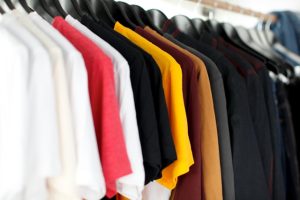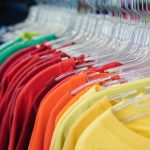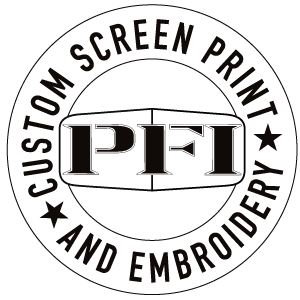-
How Much Do Custom T-Shirts Cost? 10 Revealing Factors
Curious about the price tag on custom tees? In this listicle, we break down all you need to know about the cost of personalized t-shirts. From factors influencing prices to tips for getting the best bang for your buck, consumers, products, and us, we’ve got you covered. Get ready to dive into the world of custom apparel pricing and consumers!
Ready to find out how much it costs to rock a unique tee? Scroll down for reviews of our top picks and get ready to elevate your wardrobe game with custom t-shirts that won’t break the bank!

1. Quantity Ordered
Bulk orders of custom products often lead to discounted prices, making them a cost-effective choice for consumers. As the number of t-shirts ordered increases, the cost per unit decreases significantly, allowing buyers to save more on each shirt they purchase.
Some suppliers implement tiered pricing structures based on the quantity ordered. This means that as consumers increase their order size, they unlock better pricing tiers that offer more savings per shirt. Understanding this pricing model can help consumers make informed decisions when choosing how many shirts to purchase for their needs.
2. T-Shirt Material Quality
Higher quality materials such as organic cotton or tri-blend fabrics can elevate the cost of custom t-shirts. These premium options offer superior softness, durability, and environmental sustainability compared to basic cotton alternatives. When deciding on material quality, it’s essential to strike a balance between budget constraints and desired comfort.
-
Pros of High-Quality Materials:
-
Enhanced comfort for prolonged wear.
-
Better resistance to shrinking and fading.
-
Cons of High-Quality Materials:
-
Increased upfront costs.
-
Potential higher maintenance requirements.
Cheaper options like basic cotton are more economical but may lack the luxurious feel and longevity associated with premium fabrics. It’s crucial to assess the intended use of the t-shirts; for everyday casual wear, basic cotton might suffice, while special events or promotional purposes could benefit from the elevated appeal of organic or tri-blend materials.
Consider factors beyond just cost when selecting t-shirt material; think about how often they will be worn, washed, and what level of comfort is desired. Ultimately, investing in higher-quality fabric can result in longer-lasting satisfaction and a more sustainable choice overall.
3. Complexity of Design
-
Intricate designs with multiple colors and fine details can lead to additional costs for printing custom t-shirts.
-
Conversely, simple designs with fewer elements are usually more budget-friendly.
Discussing the intricacy of your design with your supplier is crucial in understanding any potential extra charges that may arise. By communicating openly about the complexity of your desired design, you can work together to find cost-effective solutions that meet both your creative vision and budget constraints.
Remember, while elaborate designs can be visually striking, they often come at a higher price due to the increased resources required for their production. On the other hand, minimalist designs not only offer a sleek aesthetic but also help keep costs down.
When considering the design for your custom t-shirt, think about how intricate or straightforward you want it to be and weigh this decision against your budgetary considerations. Being mindful of these factors from the outset can help ensure a smooth collaboration with your supplier and result in a final product that meets both your artistic expectations and financial limitations.
4. Number of Colors Used
Each color in a design adds to the cost as it requires a separate screen or print. To manage expenses, limiting the number of colors used is key. Opting for digital printing can be more cost-effective, especially for intricate multicolor designs.
When designing custom t-shirts, simplicity can be your best friend economically. The more colors involved, the higher the production costs tend to climb.
By reducing the palette to just a few essential colors, you not only save money but also achieve a cleaner and more impactful design.
Digital printing technology allows for vibrant and detailed designs without the need for multiple screens or layers per color. This method streamlines production processes and reduces overall expenses significantly.
Consider this: A company looking to create branded shirts may find that using only their corporate colors not only maintains brand consistency but also keeps costs at bay compared to incorporating various shades into their design.
5. Printing Method

Different printing methods impact the cost of custom t-shirts significantly:
-
Screen printing is ideal for bulk orders due to its cost-effectiveness.
-
Heat transfer suits small batches but may crack over time.
-
Direct-to-garment (DTG) printing works well for intricate designs and smaller quantities.
When choosing a printing method, consider factors beyond just price:
-
Quality: Ensure the method aligns with your design requirements.
-
Durability: Evaluate how each method holds up after multiple washes.
Researching and comparing prices can help you make an informed decision:
-
Get quotes from multiple printers to compare costs accurately.
-
Consider the complexity of your design; some methods are better suited for detailed artwork.
6. Customization Location
-
Printing on different areas of the t-shirt, like the front, back, sleeves, or pockets, can lead to extra charges.
-
Complex placements may demand specialized equipment or techniques that could impact the final cost significantly.
When considering customizing your t-shirts, it’s crucial to factor in where you want the design to be placed. The location of customization plays a pivotal role in determining the overall price you’ll pay for each shirt. Discussing these options with your supplier is essential as they can provide insights into how different placements affect costs and what additional charges might apply based on your preferences.
Remember that intricate designs requiring precise alignment or unique printing methods can drive up expenses due to increased production time and resources needed. By understanding how customization locations influence pricing, you can make informed decisions that align with both your budget and design vision.
7. Size of the Design
Larger designs generally lead to higher costs due to increased materials and labor required. On the other hand, smaller designs are more cost-effective, making them a budget-friendly option for custom t-shirts.
Consider scaling down your design if you are looking to save on expenses without compromising on creativity or impact. By opting for a smaller design, you can achieve a balance between customization and affordability.
Remember that intricate details and elaborate artwork can drive up production costs significantly. Simplifying your design while retaining its essence can be a smart strategy to keep expenses in check while still achieving the desired look.
When planning your custom t-shirt project, think about how the size of your design will influence the overall cost. Making informed decisions about the scale of your artwork can help you stay within budget while getting quality customized apparel that meets your needs effectively.
8. Brand of the T-Shirt
Considering the brand is crucial. Here’s why:
-
Branded t-shirts from reputable manufacturers generally come with a higher price tag due to their established quality and reputation.
-
Opting for generic or unbranded shirts can offer more budget-friendly options without compromising on the overall quality.
-
Conduct thorough research on various brands to compare prices and find a suitable balance between cost-effectiveness and durability.
Remember, while branded shirts might be pricier, they often provide assurance in terms of fabric quality and longevity. On the other hand, unbranded options can be cost-effective solutions that still maintain satisfactory standards.
9. Rush Orders

When you’re in a hurry to get your custom t-shirts, rush orders can be a lifesaver but may come with extra costs. Planning ahead is key to avoiding these additional fees; giving yourself enough time for production and shipping can save you money in the long run. It’s crucial to communicate your timeline clearly with the supplier so they can inform you about any associated charges for expediting your order.
Rush orders are ideal for last-minute events or urgent situations where waiting isn’t an option. However, keep in mind that rushing production may impact the quality of the final product due to the accelerated process. Always weigh the urgency of your needs against potential extra expenses and compromised quality when deciding on a rush order.
Discussing all aspects of rush orders upfront with your supplier helps ensure transparency and prevents surprises down the line. By understanding how rush orders work and their implications on cost and quality, you can make informed decisions that align with both your timeframe and budget constraints.
10. Shipping and Handling Costs
-
Shipping fees for custom t-shirts can vary based on factors like distance, weight, and the chosen shipping method.
-
Some suppliers may provide free or discounted shipping options for bulk orders to help reduce overall costs.
-
It’s essential to consider shipping and handling expenses when budgeting for your custom t-shirt order.
When ordering custom t-shirts in large quantities, understanding the nuances of shipping costs becomes crucial. While some companies might offer attractive discounts on bulk purchases, it’s common for these savings to be offset by high shipping fees if not factored into the total expense.
For instance, choosing expedited shipping services for urgent orders can significantly increase the final cost per shirt. On the other hand, opting for standard delivery methods could save money but might extend the turnaround time.
Therefore, when planning your custom t-shirt purchase, ensure you account for all potential additional charges such as rush deliveries or special packaging requirements that could impact the overall cost-effectiveness of your order.
Closing Thoughts
You’ve now got the lowdown on custom t-shirt costs. Remember, the quantity, material, design complexity, colors, printing method, customization location, design size, brand, rush orders, and shipping all play a role in the final price tag. So, when you’re gearing up to order those custom tees, keep these factors in mind to get the best bang for your buck. Get creative with your designs but stay savvy about the costs involved. Now go ahead and rock those custom tees with style!
Frequently Asked Questions
How does the quantity ordered affect custom t-shirt costs?
The more t-shirts you order, the lower the cost per shirt. Bulk orders usually offer discounts as suppliers can save on production and setup costs.
What impact does the complexity of design have on custom t-shirt pricing?
Intricate designs with many details or fine lines may increase the cost due to higher printing complexity and time required for setup.
Does the choice of t-shirt material quality influence pricing?
Yes, premium materials like organic cotton or blends are pricier than basic cotton. Quality affects comfort, durability, and overall look of your custom shirts.
How do rush orders affect custom t-shirt prices?
Rush orders often incur additional fees as they require expedited production and shipping to meet tight deadlines. Planning ahead can help avoid rush charges.
Why is customization location important in determining custom t-shirt costs?
The placement of your design on the shirt impacts pricing. Front/back prints, sleeve designs, or all-over prints require different techniques affecting overall price.

